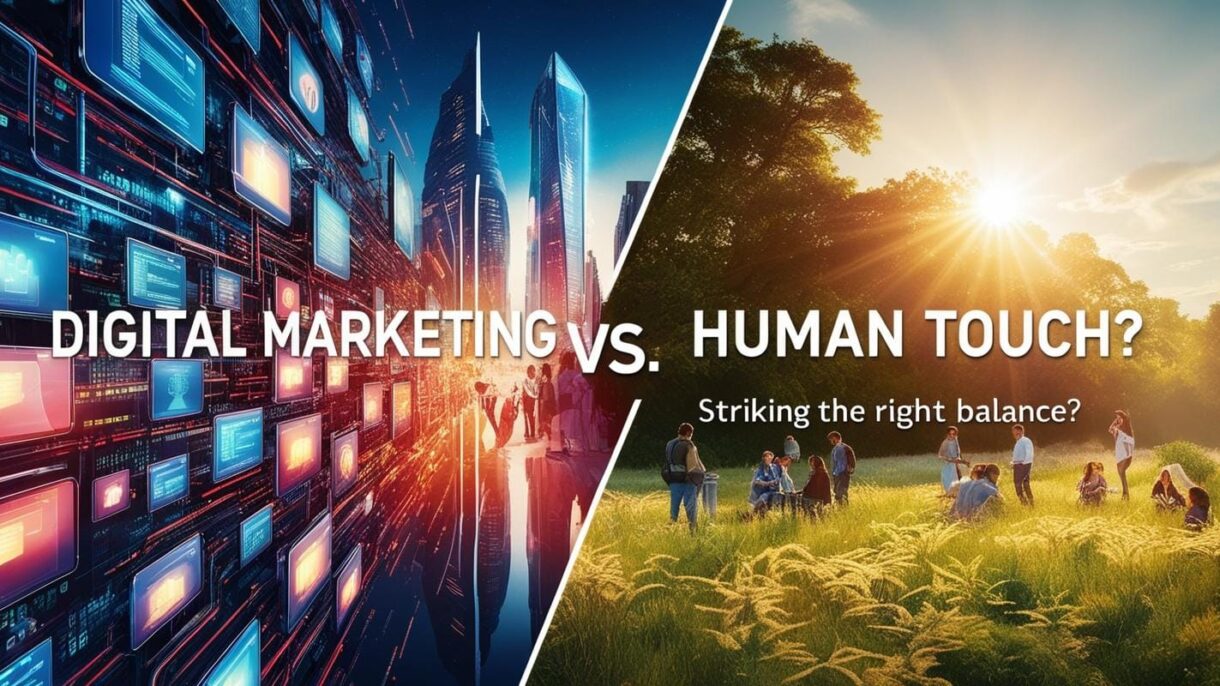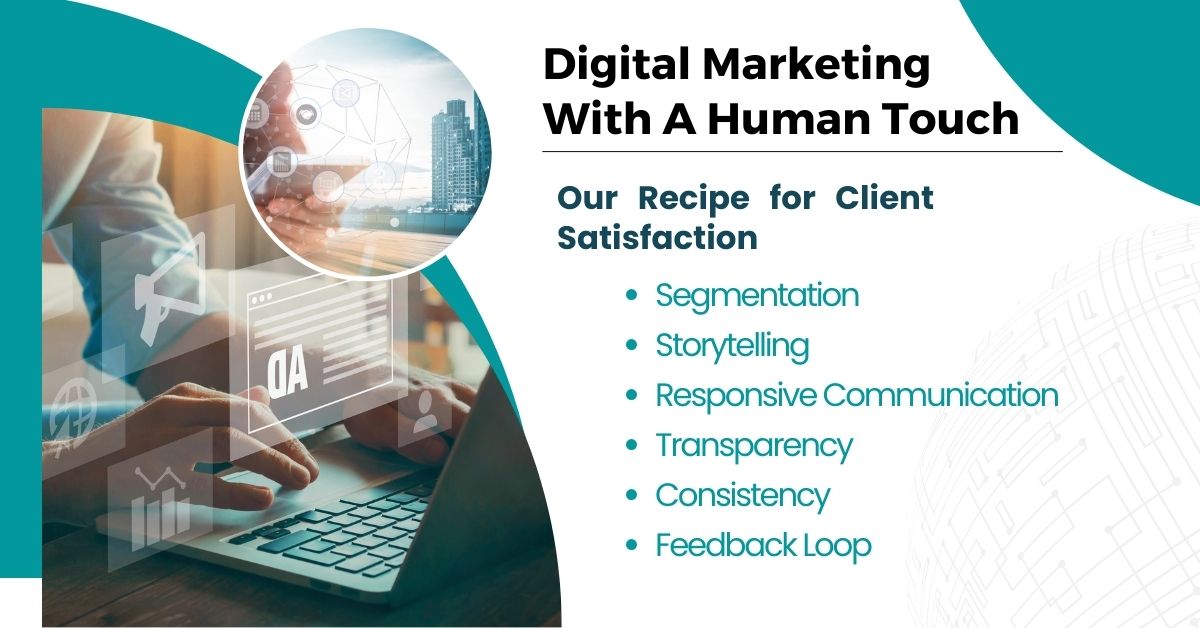
In the heart of India’s bustling cities and the quiet lanes of its small towns, a silent revolution is underway. Businesses, both new and old, are racing to capture the attention of a billion-strong population that is increasingly living, shopping, and dreaming online. The challenge, however, is not just about reaching people through digital screens-it’s about making them feel seen, heard, and valued in a world that often feels impersonal and automated. The modern Indian consumer is savvy and connected, but also deeply rooted in tradition and emotion. They expect the efficiency of digital marketing but crave the warmth of a human touch. As brands pour crores into Google and Facebook ads, many find themselves grappling with a crucial question: Is technology enough to win hearts, or does the real magic happen when digital convenience meets genuine human connection? This struggle to strike the right balance between automation and authenticity is at the core of every modern marketing strategy, and solving it is the key to thriving in today’s India.
Table of Contents
Sr. Headings
1.Introduction: The Modern Challenge of Balancing Digital and Human Touch
2.The Digital Marketing Boom in India
3.Why Only Performance Marketing Isn’t Enough
4.The Emotional Gap: Where Human Touch Matters
5.Growth Marketing: Beyond Just Clicks
6.The Power of Influencers in Indian Markets
7.Regional Nuances: India’s Unique Digital Landscape
8.The Rise of Nano-Influencers and Local Voices
9.The Role of Institutions: OCP Academy’s Impact
10.Practical Training for 2025 and Beyond
11.Case Study: A Real Indian Brand’s Journey
12.Lessons Learned from the Case Study
13.Full-Stack Digital Marketing: What It Means
14.Final Outcomes: Growth, Loyalty, and Brand Love
15.Conclusion: Striking the Right Balance
16.FAQ: Your Top Digital Marketing Questions Answered
The Digital Marketing Boom in India
India’s digital marketing landscape has transformed at a breathtaking pace. With over 600 million internet users and government initiatives like Digital India, businesses are shifting from traditional advertising to online platforms at record speed. The market is projected to grow at a staggering 30.2% CAGR from 2024 to 2032, driven by mobile-first strategies, AI, and the growing popularity of e-commerce giants like Amazon and Flipkart. Social media platforms, video content, and regional campaigns have become the new battlegrounds for brand visibility. Yet, as companies invest heavily in digital infrastructure, they are also discovering the complexities of engaging a diverse and discerning audience. The sheer scale of India’s digital ecosystem is both an opportunity and a challenge, demanding not just technological adoption but also a nuanced understanding of local cultures, languages, and behaviors.
Why Only Performance Marketing Isn’t Enough
For many brands, performance marketing-using Google or Facebook ads to drive measurable clicks, leads, and sales-has long been the go-to strategy. The appeal is obvious: every rupee spent can be tracked, analyzed, and optimized for maximum return. But as digital channels become saturated, the effectiveness of these campaigns is starting to wane. Audiences are bombarded with similar messages, making it harder for any single brand to stand out. The relentless focus on short-term metrics often leads to a transactional mindset, where the deeper work of building trust, loyalty, and emotional connection is neglected. In India, where relationships and reputation carry immense weight, brands that rely solely on performance marketing risk becoming forgettable. The data-driven approach, while powerful, cannot capture the subtle art of storytelling or the long-term value of brand love. As competition intensifies, companies are realizing that clicks and conversions are only part of the journey-what truly matters is creating experiences that resonate and endure.
The Emotional Gap: Where Human Touch Matters
Despite the convenience of digital platforms, Indian consumers still yearn for the warmth of human interaction. A recent survey revealed that nearly half of respondents were very dissatisfied with non-human touchpoints after making a purchase. This dissatisfaction is even more pronounced in regional markets, where language and cultural nuances play a significant role in shaping customer preferences. For many, a friendly voice on the phone or a personalized message on WhatsApp can make all the difference between a one-time transaction and a lifelong relationship. Brands that ignore this emotional gap risk alienating their audience, especially in a country where trust is built through personal connections and word-of-mouth. The challenge, then, is to use technology not as a replacement for human touch, but as a bridge that brings people closer together, making every interaction feel meaningful and memorable.
Growth Marketing: Beyond Just Clicks
Growth marketing is the answer to the limitations of pure performance campaigns. Unlike traditional digital marketing, which often focuses on immediate results, growth marketing takes a holistic view of the customer journey. It combines data-driven experimentation with creative storytelling, aiming to nurture relationships at every stage-from awareness to advocacy. In India, where consumer behavior is influenced by family, community, and culture, growth marketing strategies that prioritize engagement, retention, and loyalty are proving far more effective than those chasing quick wins. Techniques like content marketing, personalized communication, and community building help brands create lasting impact. Growth marketers understand that every interaction is an opportunity to deepen trust, spark curiosity, and inspire action. By focusing on long-term value rather than short-term gains, they turn customers into passionate brand advocates, fueling sustainable business growth.
The Power of Influencers in Indian Markets
Influencer marketing has emerged as a game-changer in India’s digital landscape. As consumers become wary of traditional ads, they increasingly turn to trusted voices-bloggers, YouTubers, and social media personalities-for recommendations and inspiration. The influencer marketing industry in India is expected to reach ₹33.75 billion by 2026, with nano-influencers (those with 3,000-30,000 followers) leading the charge5. These local voices, rooted in their communities, offer authenticity and relatability that big-budget campaigns often lack. In a country as diverse as India, nano- and micro-influencers are especially powerful because they speak the language, understand the culture, and connect with audiences on a personal level. Their recommendations feel like advice from a friend, driving higher engagement and trust. Brands that leverage influencer partnerships-especially in regional languages-are able to cut through the noise and build genuine relationships with their target audience.
Regional Nuances: India’s Unique Digital Landscape
India is not a monolith. Its digital audience is fragmented across languages, regions, and cultural backgrounds. While English-speaking consumers may prefer websites and social media, Hindi and regional language speakers are more likely to engage through WhatsApp or local influencers. Legal compliance, platform popularity, and even the choice of digital touchpoints can vary dramatically from one state to another. For brands, this means that a one-size-fits-all approach simply won’t work. Campaigns must be tailored to local preferences, using insights from regional data to craft messages that resonate. The rise of hyperlocal marketing, powered by nano-influencers and regional content creators, is helping brands bridge the gap between national reach and local relevance. By honoring India’s diversity, marketers can create campaigns that feel personal, authentic, and impactful.
The Rise of Nano-Influencers and Local Voices
The future of influencer marketing in India belongs to the nano-influencer. Unlike celebrities or macro-influencers, these everyday creators have smaller but highly engaged followings, often concentrated in specific towns or communities. Their content is perceived as more genuine, and their recommendations carry the weight of personal experience. As internet penetration deepens beyond metro cities, regional influencers who communicate in local languages are seeing engagement rates soar-up to 40% higher than their English-speaking counterparts. For brands, collaborating with nano-influencers offers a cost-effective way to reach new markets, build trust, and drive action. The integration of social commerce-where influencers can showcase products and enable instant purchases-further amplifies their impact. In 2025, expect to see brands deploying armies of nano-influencers for hyper-local campaigns that deliver both awareness and sales.
The Role of Institutions: OCP Academy’s Impact
In this rapidly evolving landscape, the need for skilled digital marketers has never been greater. Institutions like OCP Academy are playing a pivotal role in preparing the next generation of professionals for the challenges of 2025 and beyond. By offering practical, industry-aligned training, OCP Academy empowers aspiring entrepreneurs and job seekers to master not just the technical aspects of digital marketing, but also the art of storytelling, customer engagement, and ethical brand building. Their programs are designed to bridge the gap between theory and real-world application, ensuring that graduates are job-ready and equipped to drive meaningful results. For businesses, partnering with institutions like OCP Academy means access to a talent pool that understands the nuances of India’s digital ecosystem and is capable of executing full-stack marketing strategies that balance automation with empathy. In a world where technology is constantly changing, continuous learning and upskilling are the keys to staying ahead.
Practical Training for 2025 and Beyond
The digital marketing skills required in 2025 are vastly different from those of just a few years ago. Today, marketers must be adept at using AI and data analytics, but also skilled in crafting compelling narratives and building communities. OCP Academy’s curriculum reflects this shift, combining hands-on training in performance marketing, SEO, content creation, and influencer partnerships with modules on customer psychology, regional marketing, and ethical practices. Students learn by doing-working on live projects, collaborating with real brands, and receiving mentorship from industry experts. This practical approach ensures that graduates are not just technically proficient, but also emotionally intelligent and adaptable. As India’s digital economy continues to grow, institutions like OCP Academy are essential partners in building a workforce that can harness the power of technology without losing sight of the human touch.
Case Study: A Real Indian Brand’s Journey
Consider the journey of a mid-sized Indian FMCG brand that wanted to expand its presence in tier-2 and tier-3 cities. Initially, the company relied heavily on Google and Facebook ads, targeting broad demographics with generic messaging. While this approach generated clicks, it failed to translate into sustained engagement or brand loyalty. Recognizing the limitations, the brand shifted gears-partnering with local nano-influencers who spoke the regional language and understood the community’s needs. These influencers shared authentic stories about using the product in their daily lives, addressing local pain points and cultural nuances. The brand also invested in WhatsApp-based customer support, offering personalized assistance and building relationships with buyers. By combining digital automation with a human-centric approach, the company saw a dramatic increase in customer satisfaction, repeat purchases, and positive word-of-mouth. The campaign’s success was not just measured in sales, but in the emotional connection forged with the community-a connection that no algorithm could replicate.
Lessons Learned from the Case Study
This real-world example highlights a fundamental truth: technology can open doors, but it is human connection that builds lasting relationships. The brand’s willingness to adapt its strategy-moving beyond performance marketing to embrace growth tactics and influencer partnerships-was the key to unlocking new markets. By respecting regional diversity, investing in authentic voices, and prioritizing customer experience, the company was able to differentiate itself in a crowded marketplace. The lesson for other Indian businesses is clear: success in digital marketing is not about choosing between automation and empathy, but about weaving them together into a seamless, customer-centric journey.
Full-Stack Digital Marketing: What It Means
A full-stack digital marketing strategy is one that integrates every available tool-performance ads, content marketing, SEO, influencer partnerships, data analytics, and human-centered customer service-into a cohesive whole. It recognizes that different stages of the customer journey require different approaches, and that the most effective campaigns are those that balance efficiency with emotion. In India, where consumers are both digitally savvy and deeply relational, full-stack strategies allow brands to reach wide audiences while still delivering personalized, meaningful experiences. By leveraging the strengths of each channel and touchpoint, businesses can maximize their impact, build trust, and drive sustainable growth.
Final Outcomes: Growth, Loyalty, and Brand Love
The results of adopting a balanced, full-stack approach to digital marketing are profound. Brands that invest in both technology and human touch see higher engagement, stronger loyalty, and greater advocacy. Customers feel valued and understood, leading to repeat purchases and enthusiastic referrals. In a marketplace as dynamic and competitive as India’s, these outcomes are not just desirable-they are essential for long-term success. The true measure of a brand’s impact is not just in its sales figures, but in the stories customers tell, the relationships they build, and the love they inspire. By striking the right balance between digital efficiency and human empathy, businesses can create legacies that endure.
FAQs


While digital marketing offers unmatched reach and efficiency, combining it with offline efforts-like events, community engagement, or local partnerships-can deepen trust and create memorable experiences, especially in regional markets where personal connections matter.
Influencer marketing, especially with nano- and micro-influencers, is highly effective for small businesses. These partnerships offer authenticity, local relevance, and high engagement at a fraction of the cost of traditional advertising, helping brands build trust quickly.
Relying solely on performance ads is risky, as audiences are becoming less responsive and competition is fierce. Combining ads with content marketing, influencer partnerships, and personalized customer service delivers better long-term results.
Yes, influencer marketing is highly effective in India. Influencers have loyal followings and can help brands reach new audiences with authentic, relatable content. Partnering with the right influencers can boost credibility and drive meaningful engagement.
Full-stack digital marketing integrates all marketing channels-online and offline-for a seamless customer experience. It helps you reach more customers, improve brand consistency, and adapt quickly to changing trends, ultimately driving better results and higher ROI.
Conclusion
As India marches boldly into the digital future, the question is not whether to choose between technology and human touch, but how to blend them in ways that honor both efficiency and emotion. The most successful brands will be those that harness the power of data and automation without losing sight of the individual behind every click. They will invest in training, embrace regional diversity, and partner with authentic voices to create campaigns that resonate deeply. The journey is not always easy, but it is always worth it. In the end, the brands that thrive will be those that remember: in a world of algorithms and analytics, it is the human heart that makes all the difference. So, as you build your marketing strategy for 2025 and beyond, dare to dream bigger, reach farther, and connect deeper. The future belongs to those who strike the right balance-and in doing so, change the world, one relationship at a time.
OCP Academy
(A Unit of OCP Foundation)
Learning Today, Leading Tomorrow




